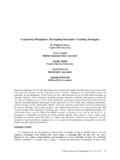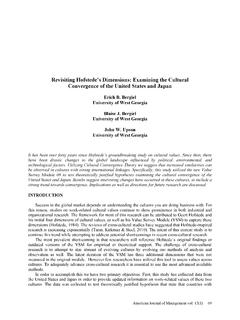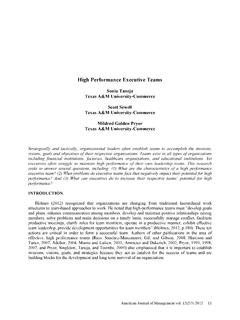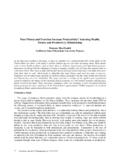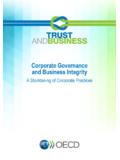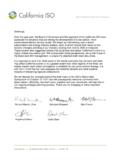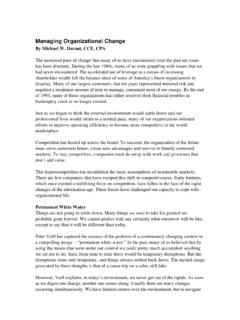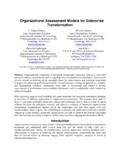Transcription of Modeling the Extended Warranty: A Managerial Focus
1 Modeling the Extended warranty : A Managerial Focus Noah Myung Naval Postgraduate School Robert J. Eger III Naval Postgraduate School We provide a model of an Extended warranty . To maximize profit, a producer always wants to sell with some type of warranty as opposed to selling with no warranty . The Extended warranty is more likely to be provided as the consumer becomes more patient, as the producer becomes impatient, or if the likelihood of product failure does not increase too much in the Extended period. We show that there is a separating equilibrium in which the high quality producers sell with warranties and the low quality producers sell without warranties.
2 We discuss the implications of warranty management in a government. INTRODUCTION Many products consumers and governments purchase come with some type of a warranty . An Extended warranty , which extends the coverage of the warranty originally designed by the producer, is also available through the producer or a third party. The cost impact of Extended warranties can be significant. A priori, it is unclear whether it is beneficial to the consumer or the producer to have an Extended warranty . A warranty , similar to insurance, provides protection against bad outcomes and faulty manufacturing quality.
3 The producer can use a warranty as a signal of the quality of the product. Hence, it may be that the Extended warranty offered by the producer may very well be a worthwhile expenditure, but the same may not be true when the Extended warranty is provided by a third party. We develop a formal model to help understand what type of warranties are provided and consumed. We begin with the general model of insurance, benchmarking the model to be the best-case scenario for the consumer. The benchmark of the best-case scenario for the consumer means that there is neither hidden information nor hidden action; a buyer can purchase insurance in any scale of units, and lastly, all the competition is among the producers.
4 In this situation, we show that the consumer will always want to fully protect herself against a bad outcome ( , full insurance). Of course, warranties are not identical to insurance and we cannot say with certainty that the consumer will still want the warranty under the new price and warranty pair. For example, warranties do not deal with partial warranty , partial replacement, or partial payment as insurance can. The producer replaces the entire unit if it fails to function as promised. The price of the standard warranty is built into the price of the final good consumed by the consumer.
5 We transition our model to the warranty scenario, introducing the likelihood of success and failure of a product, the replacement cost, and a model for a standard warranty and an Extended warranty . We find that the producer will always want to sell with the standard warranty compared to no warranty , because it generates a higher profit. Higher profit is generated by the fact that there is risk-126 Journal of Applied Business and Economics Vol. 17(3) 2015sharing between the consumer and the producer. The decision increases in complexity when the Extended warranty is introduced.
6 There are situations in which the producer chooses to sell with only the standard warranty or only the Extended warranty . The producer is more likely to sell with the Extended warranty as the consumer becomes more patient, the producer becomes impatient, or the likelihood of failure in the later period has a small increase. We extend the model to incorporate high-quality and low-quality producers, with the warranty used to signal the quality of the product. We find that the high quality producer will indeed sell with a warranty and will generate a positive profit.
7 The low quality producer will not want to mimic the high quality seller and will not offer a warranty . Hence, a market separation occurs according to the quality of the product. The consumers are better off purchasing from the high quality producer and obtaining a positive expected utility. However, the results also suggest that the consumer may be better off consuming partially (via split bid procurement, etc.) from both types of producers in order to prevent the high quality producer from becoming a monopoly. The outline of the paper is as follows.
8 We first start with a brief discussion of warranties. In Section 2, we provide the literature review. In Section 3, we lay out the basic model and variables, and we provide our analysis in Section 4. Section 4 starts with an insurance scenario, and then we move on to a single-period warranty situation. We extend the model to two periods that have the possibility of Extended warranties and analyze the situation of differing producer quality. In Section 5, we close by exploring some potential applications to government using the Department of Defense (DoD) as an example.
9 warranty AND INSURANCE In business and legal transactions, a warranty is defined as an assurance by one party to the other party that specific facts or conditions are true or will happen ( warranty , ). A warranty can actually cover a much broader range of issues than simply the replacement of a malfunctioning good during the coverage period. The warranty can be thought of as a promise to deliver a product. warranty delivery can have quality, performance, time, and other aspects built into it. The costs of a warranty are incorporated into the production costs either ex ante or during production but not ex post of a sale.
10 Therefore, the warranty is already factored into the final price of the good and the consumer does not pay an additional premium at the time of the sale. This means that the producer is effectively saying to the consumer, We will sell you this product and this product will do this for this many years. Insurance, on the other hand, is defined as an equitable transfer of the risk of a loss, from one entity to another, in exchange for payment ( Insurance, ). Insurance is a state-contingent good or a policy. The purpose of insurance is to share risk between the policy holder and the provider for the price of a premium.

